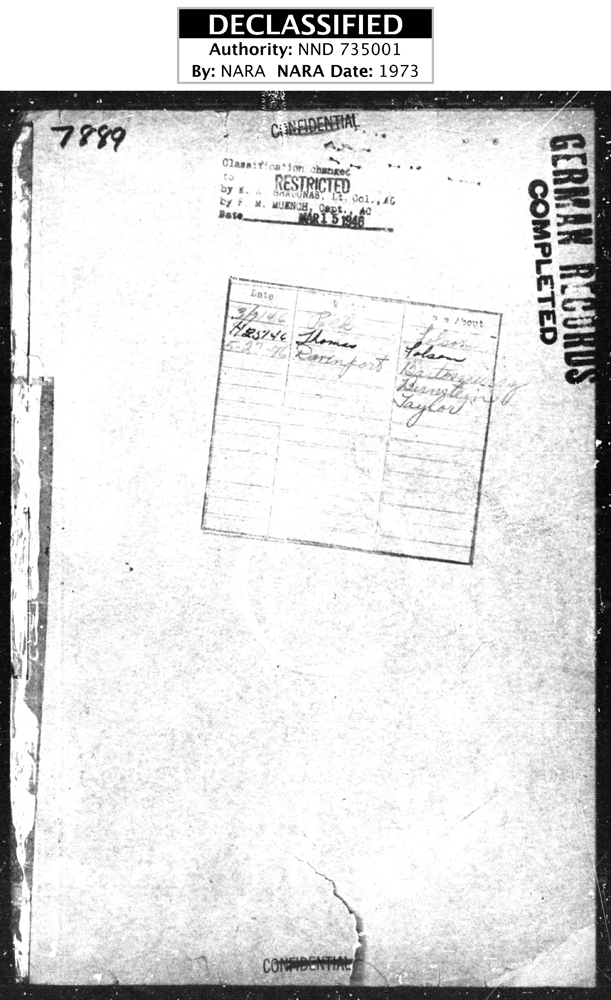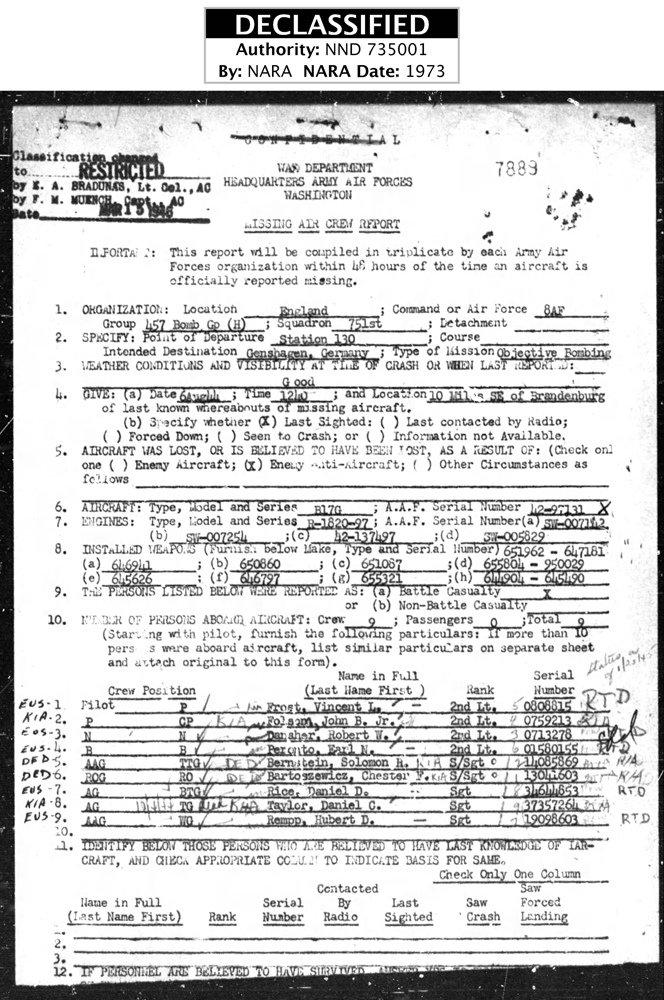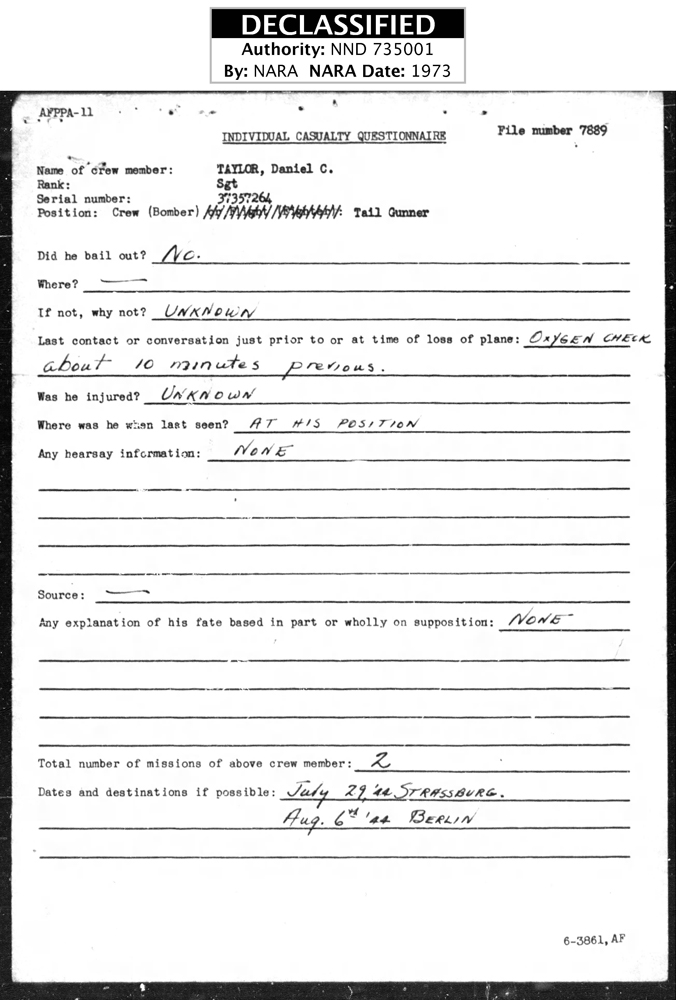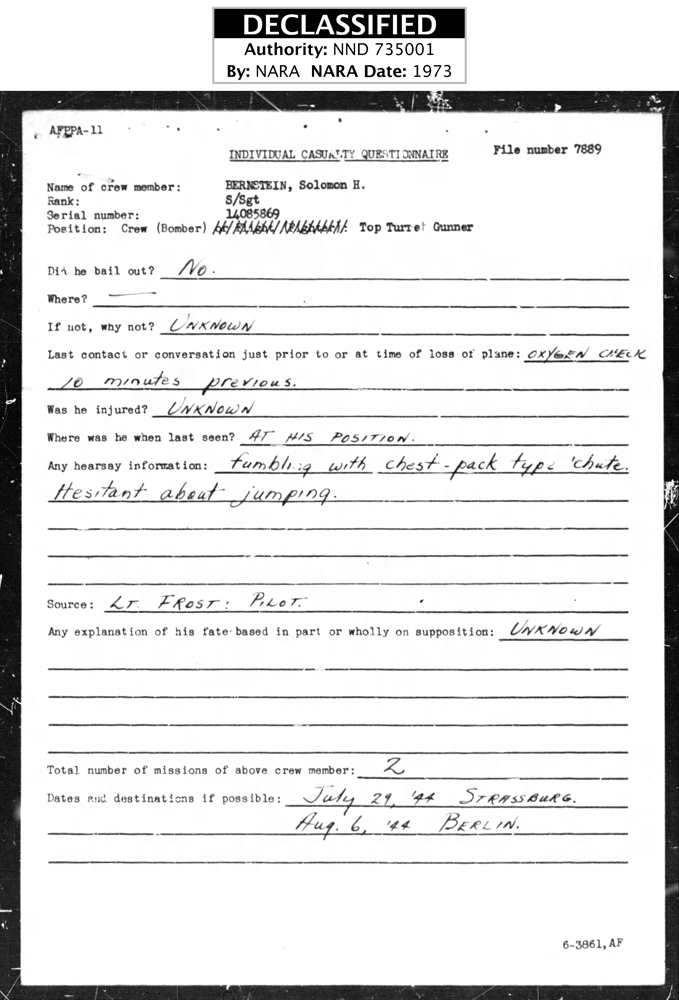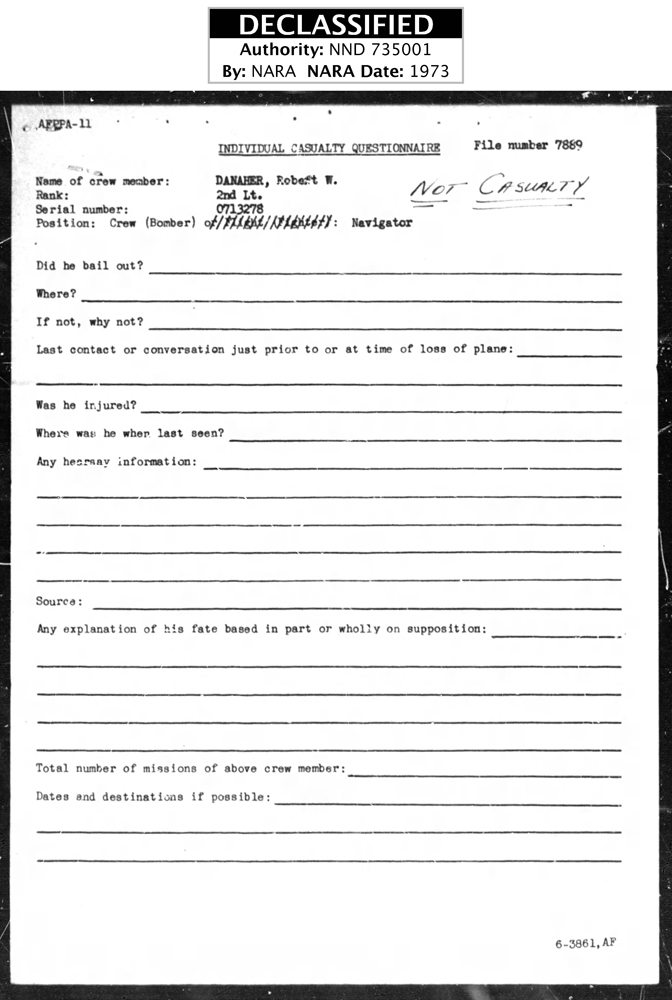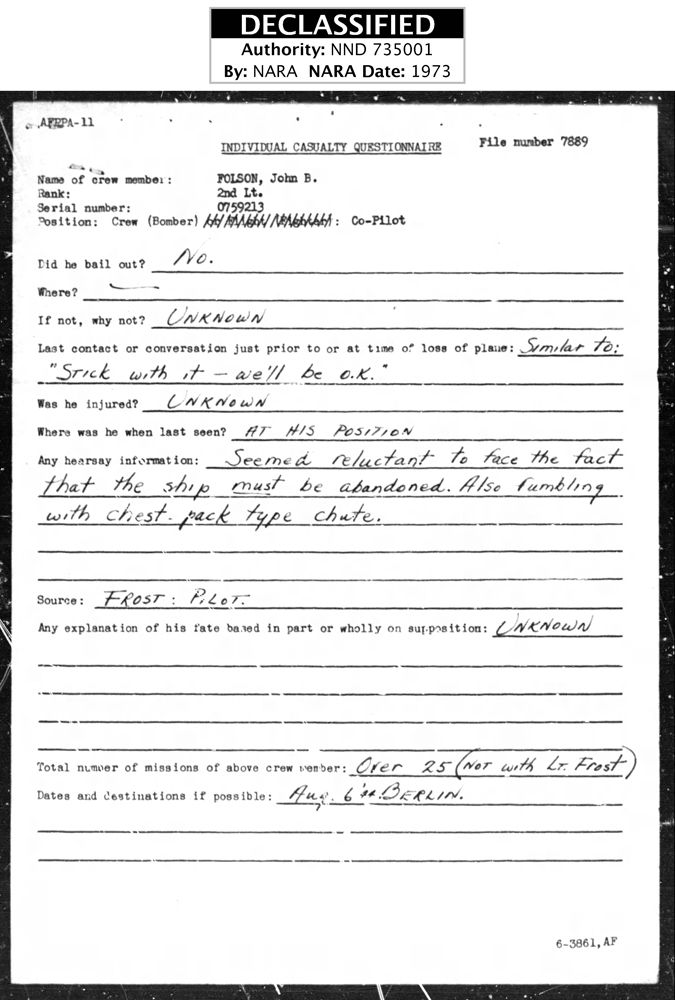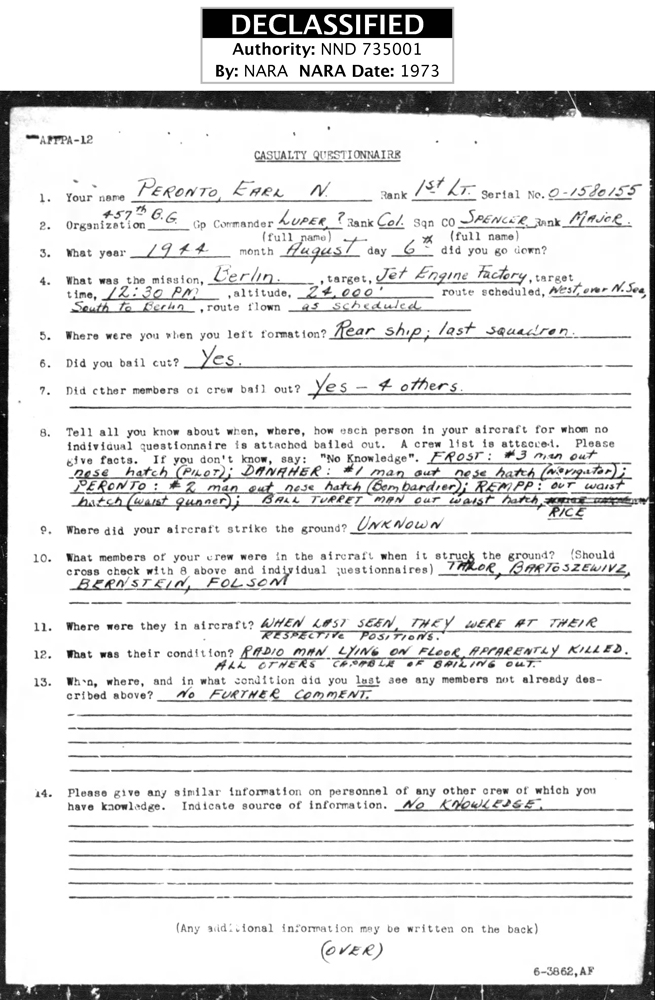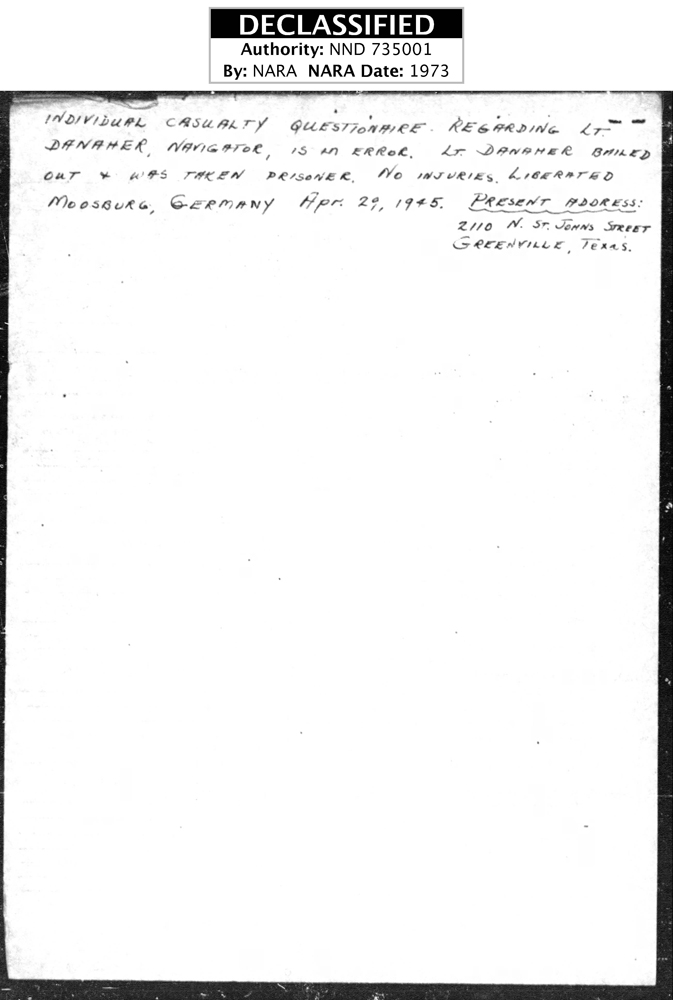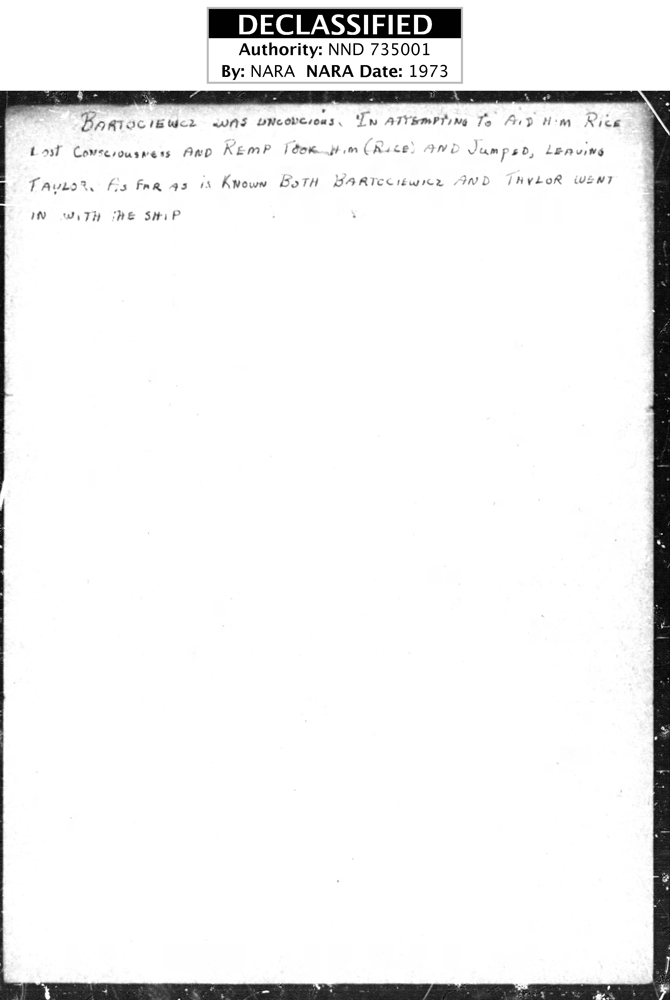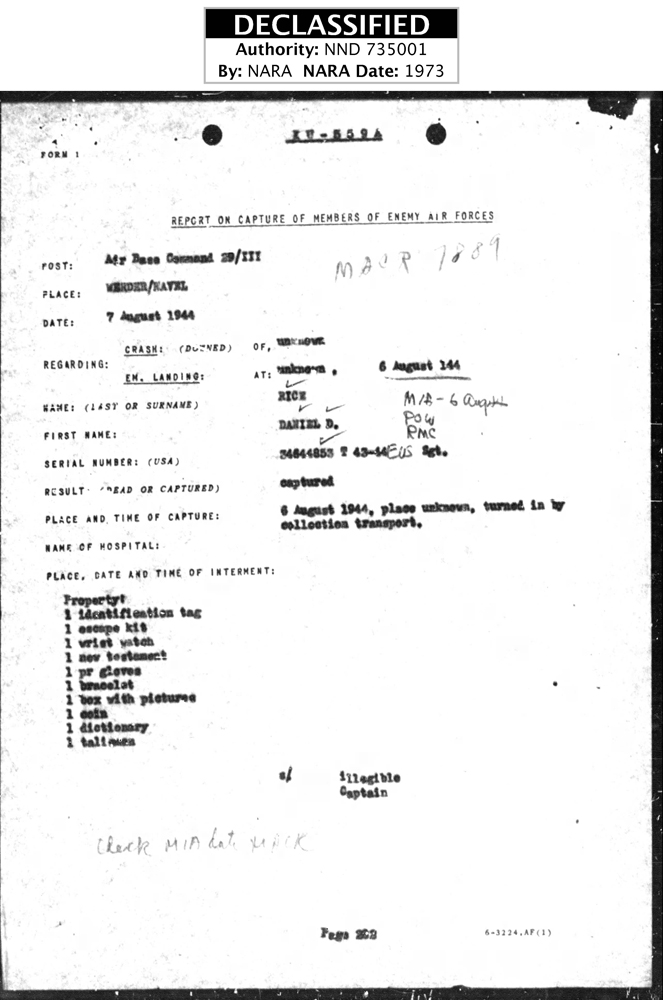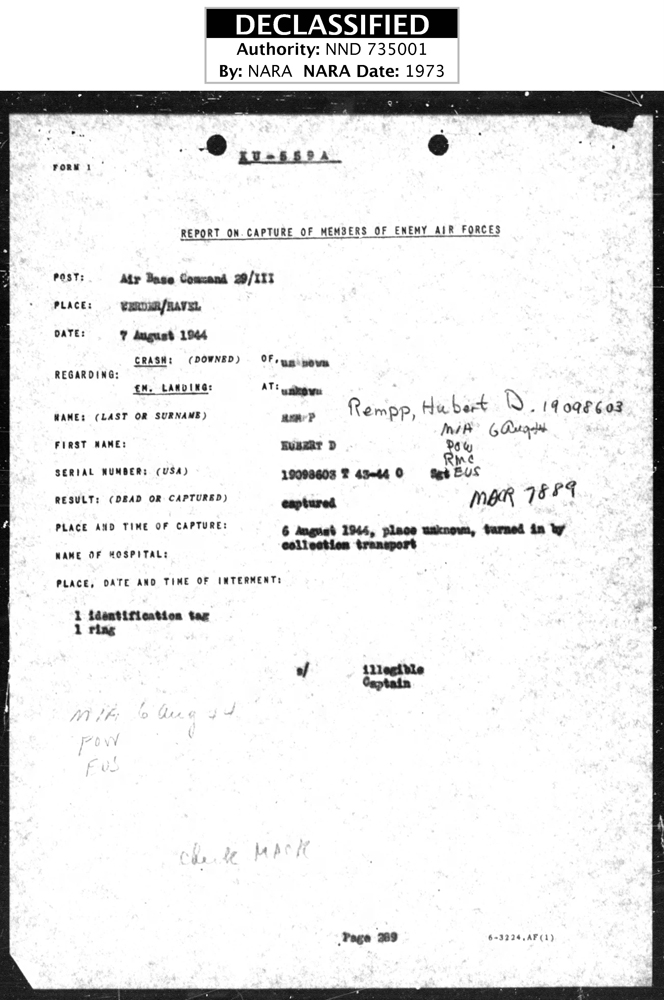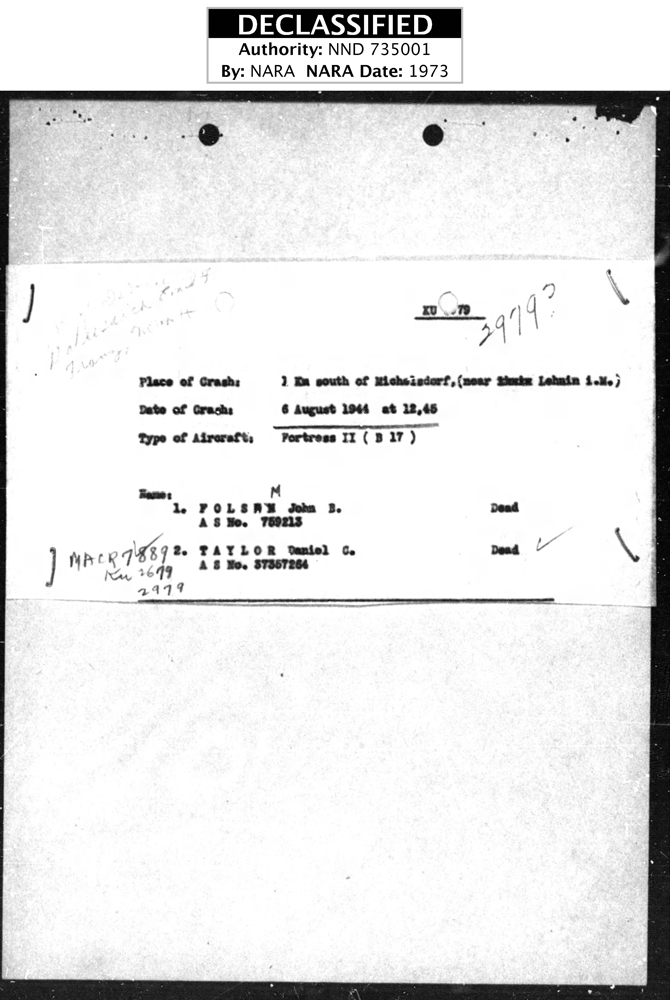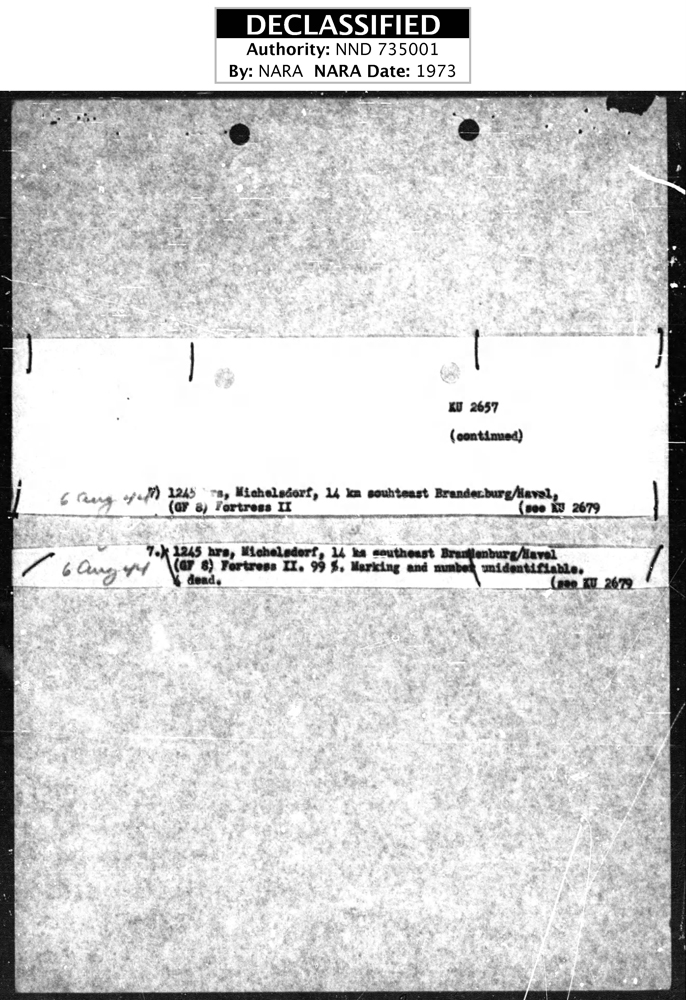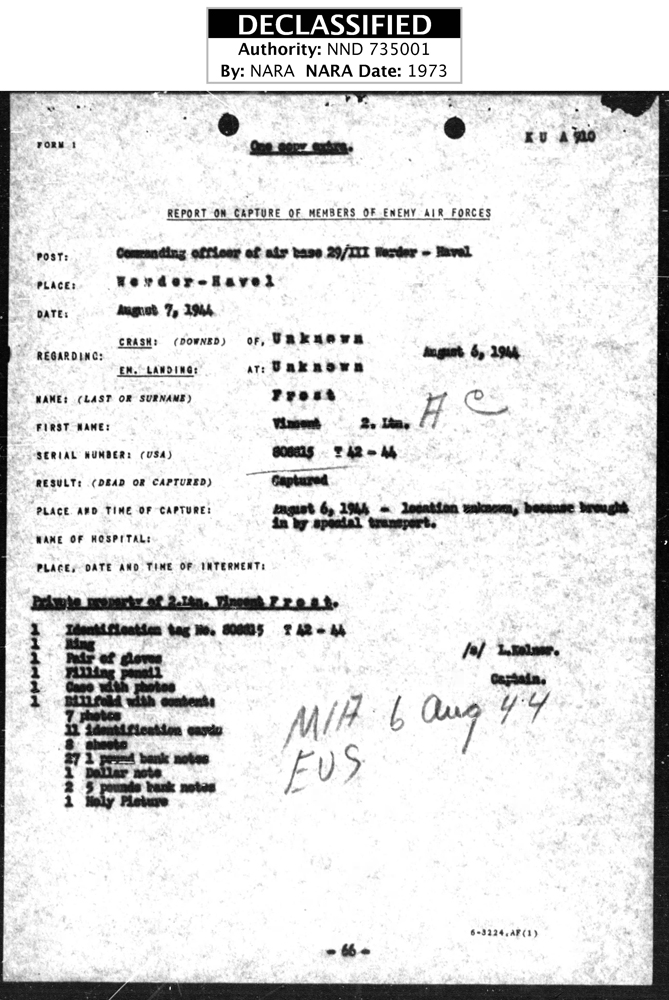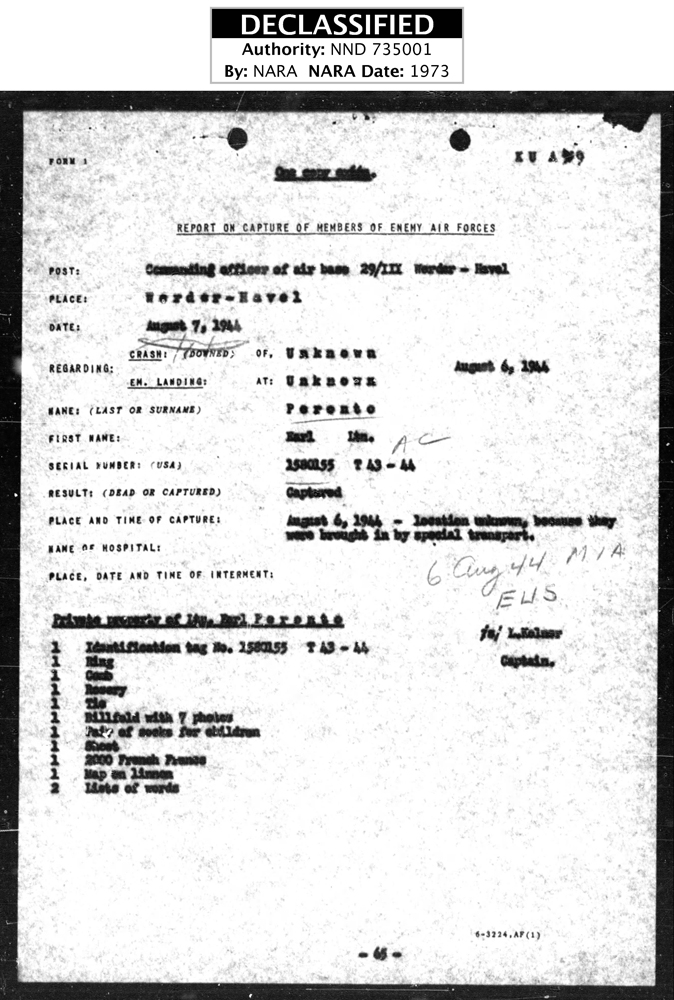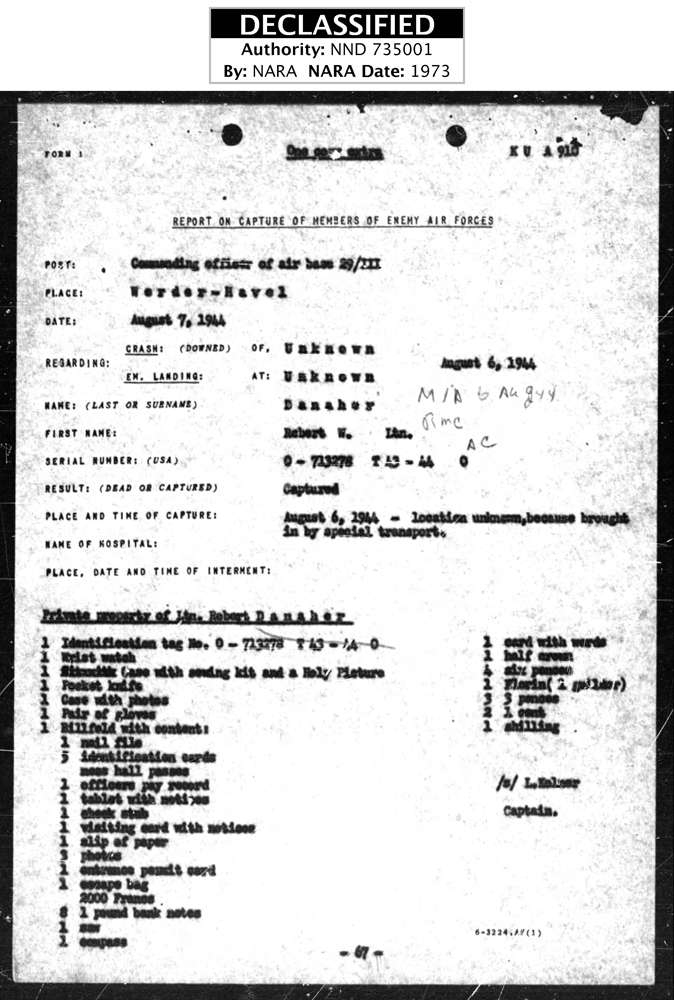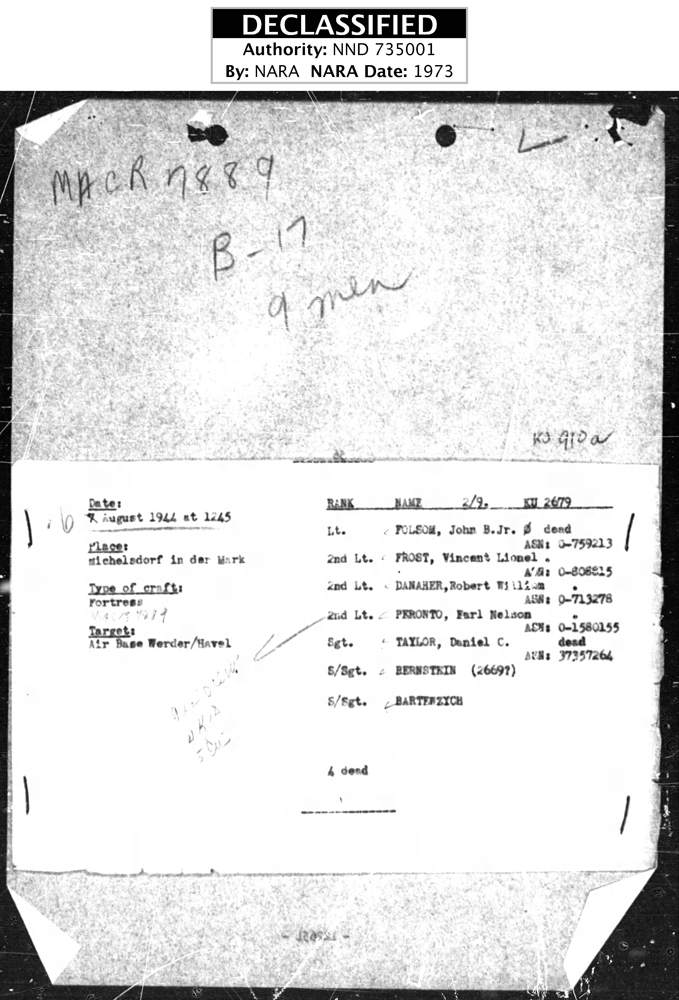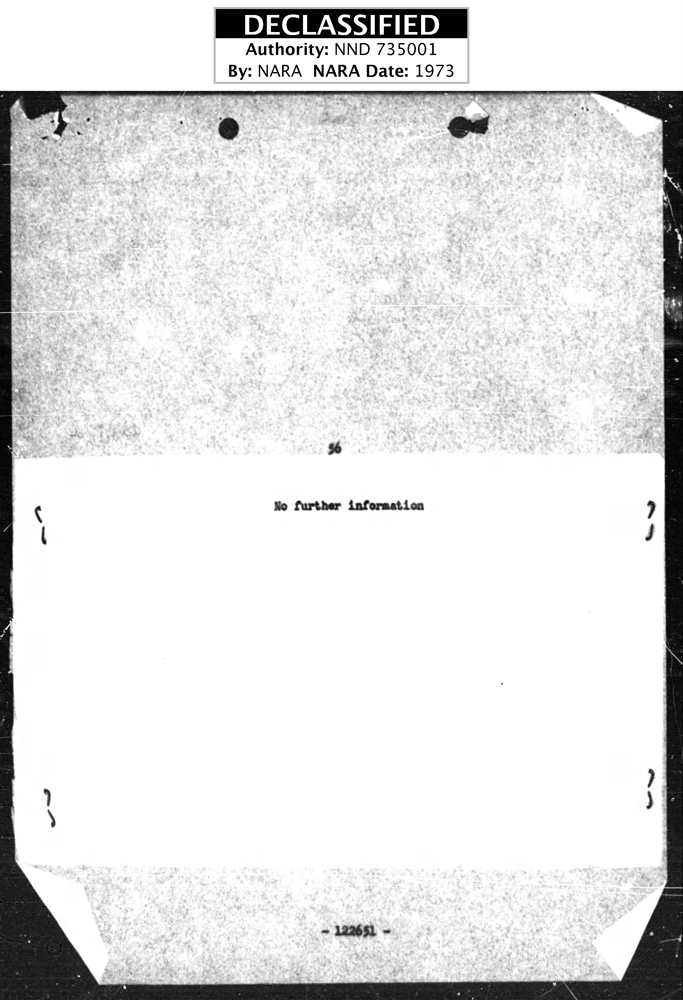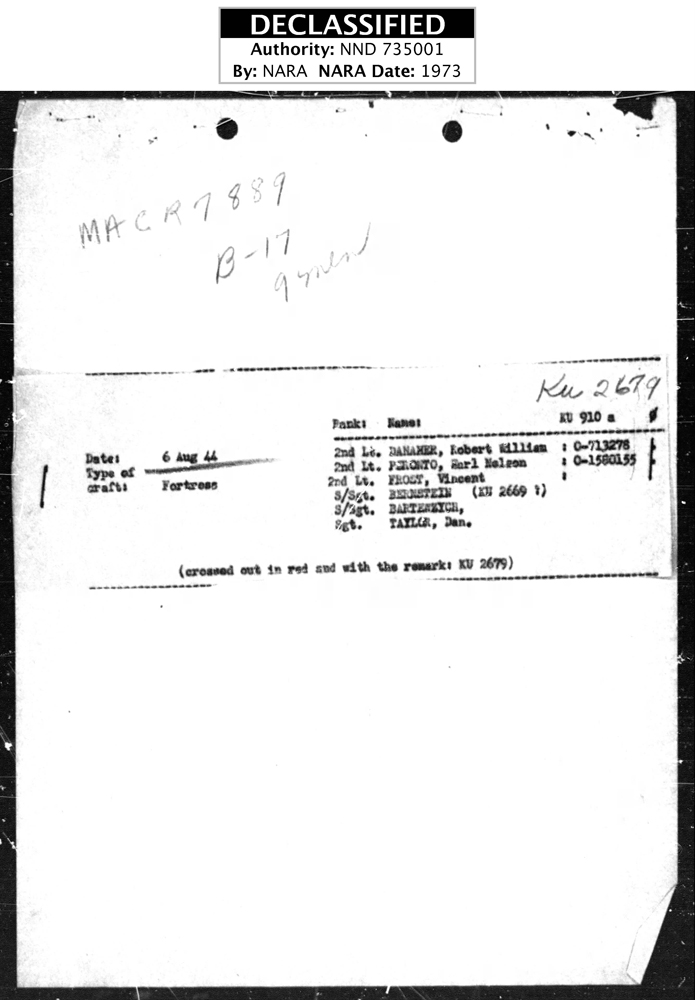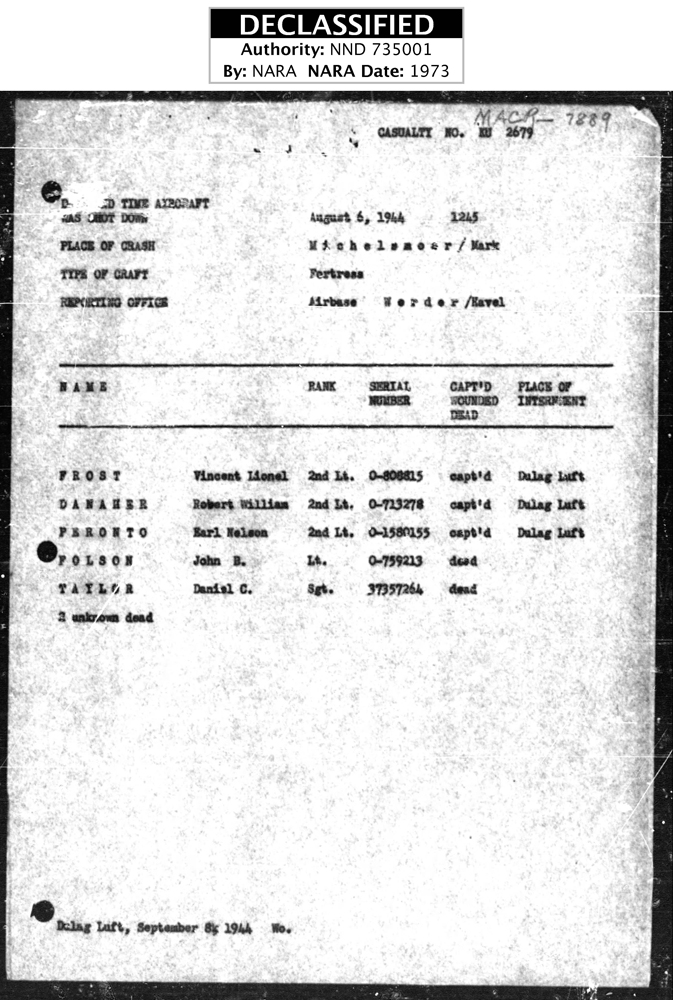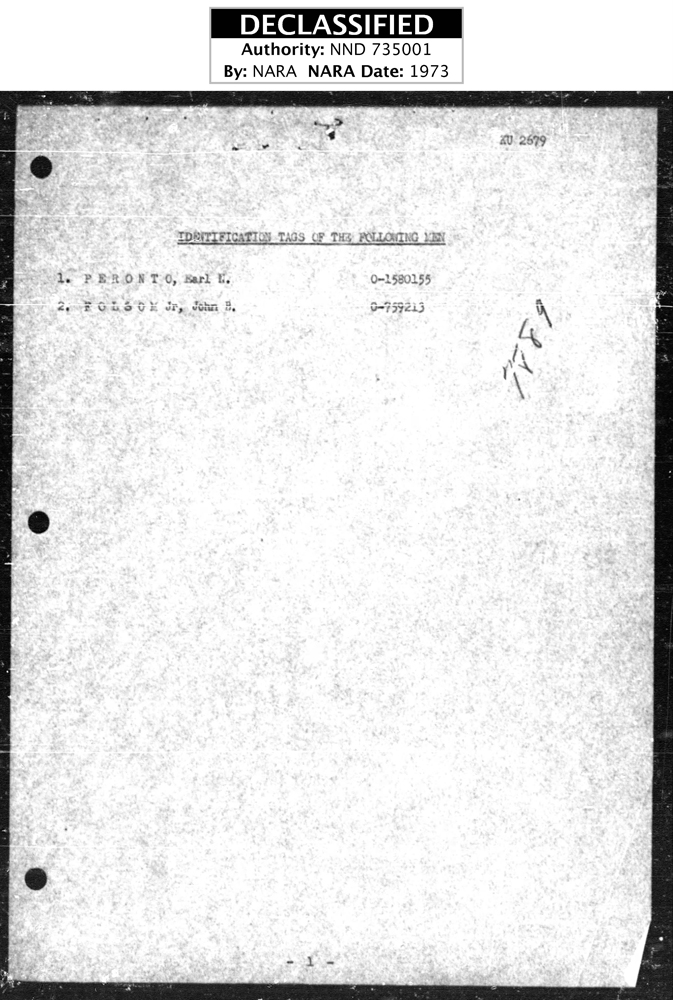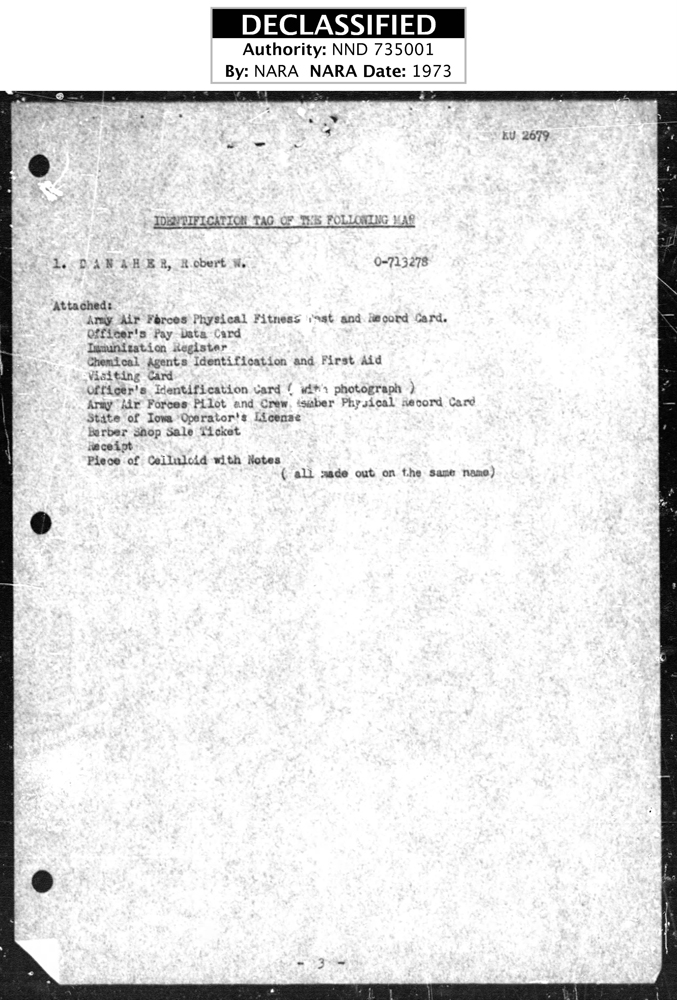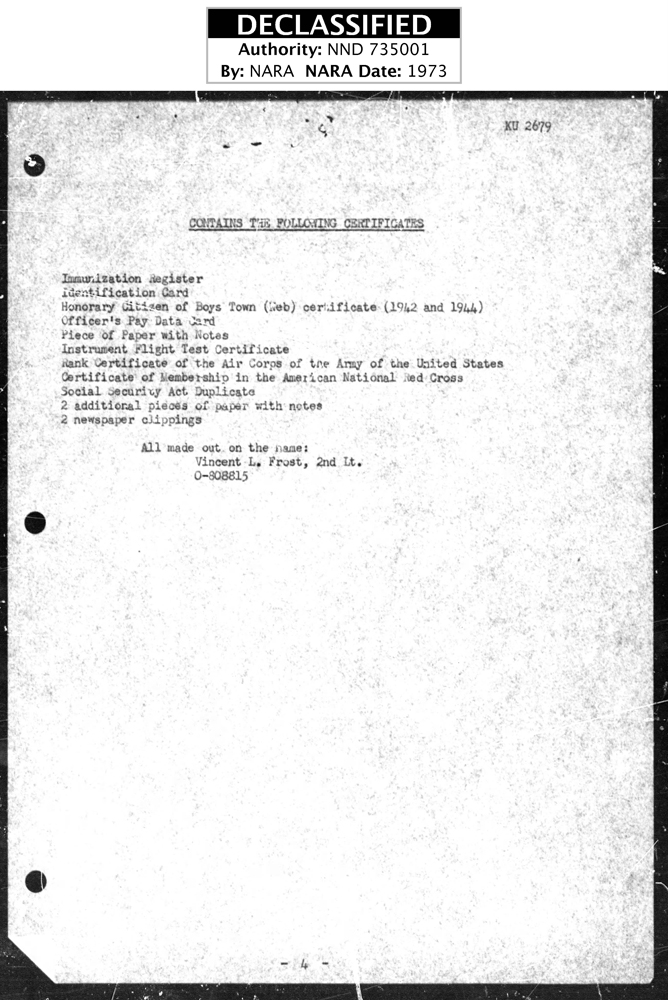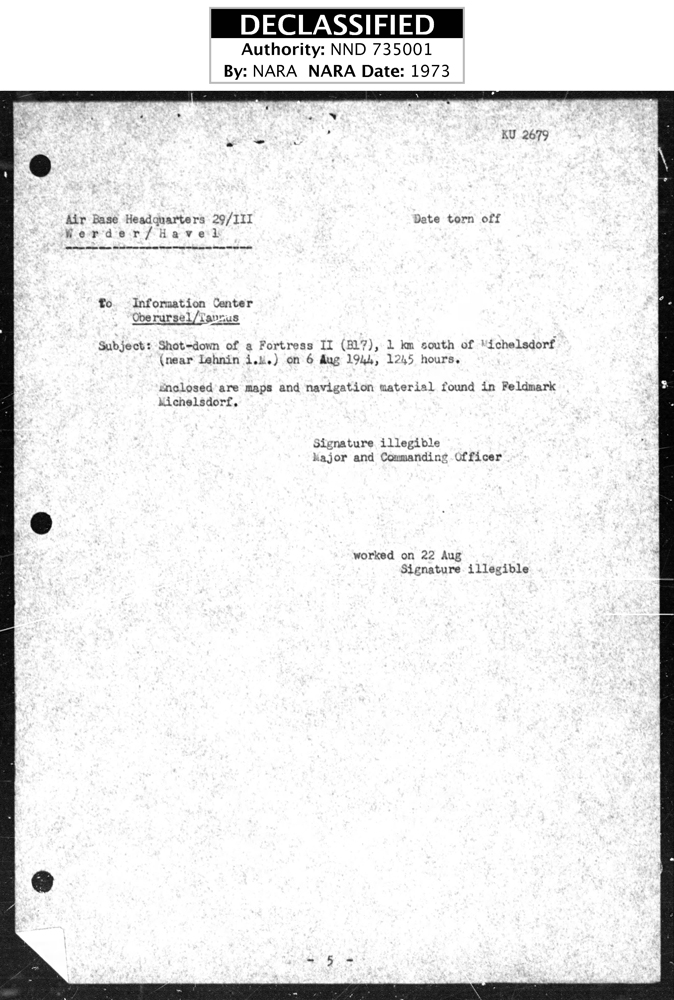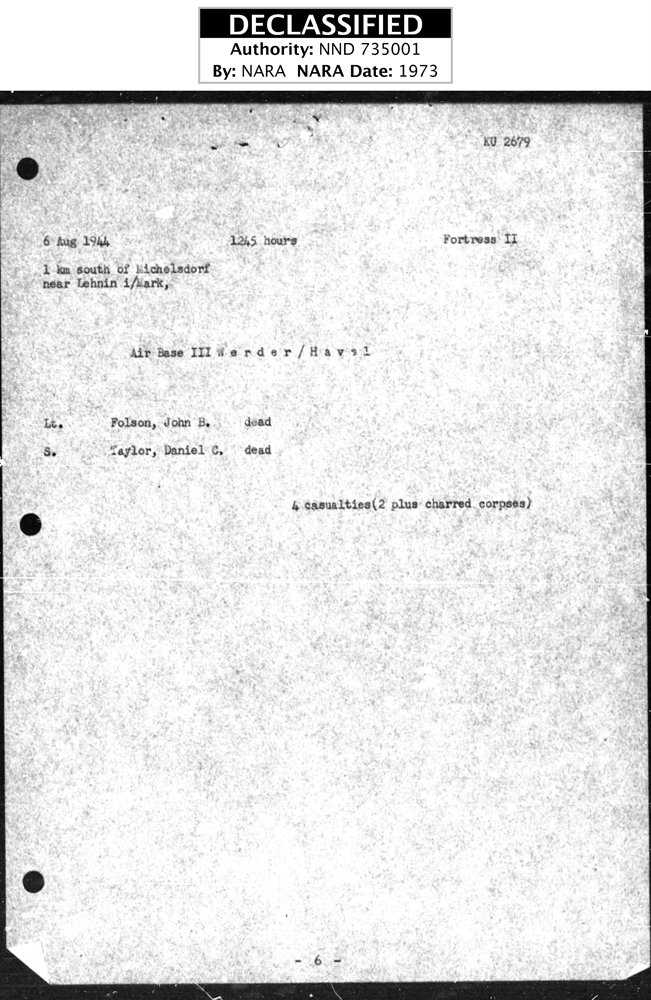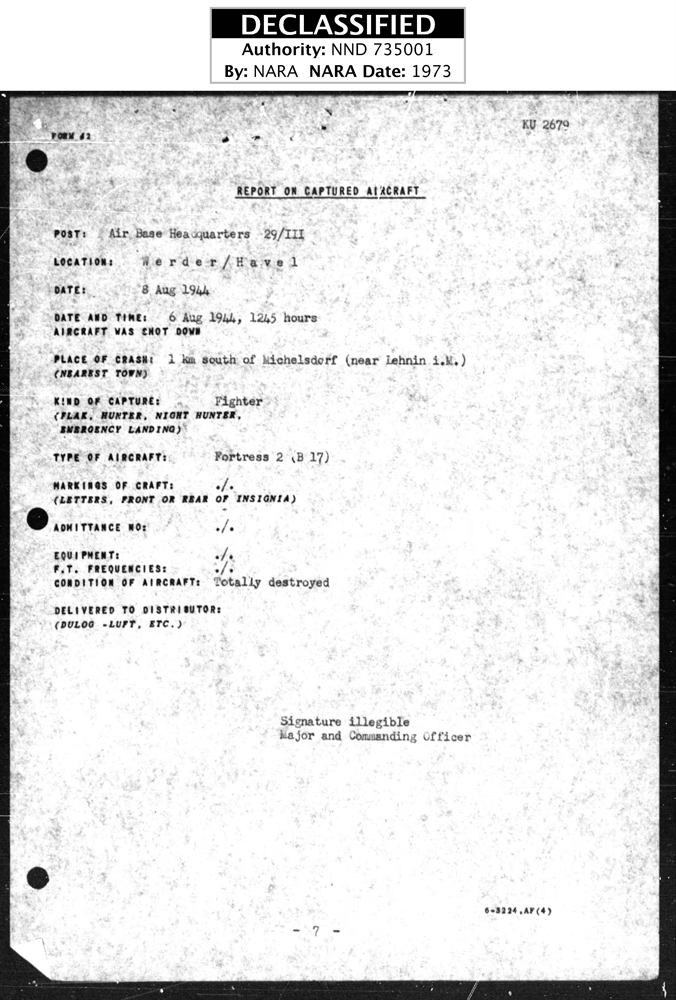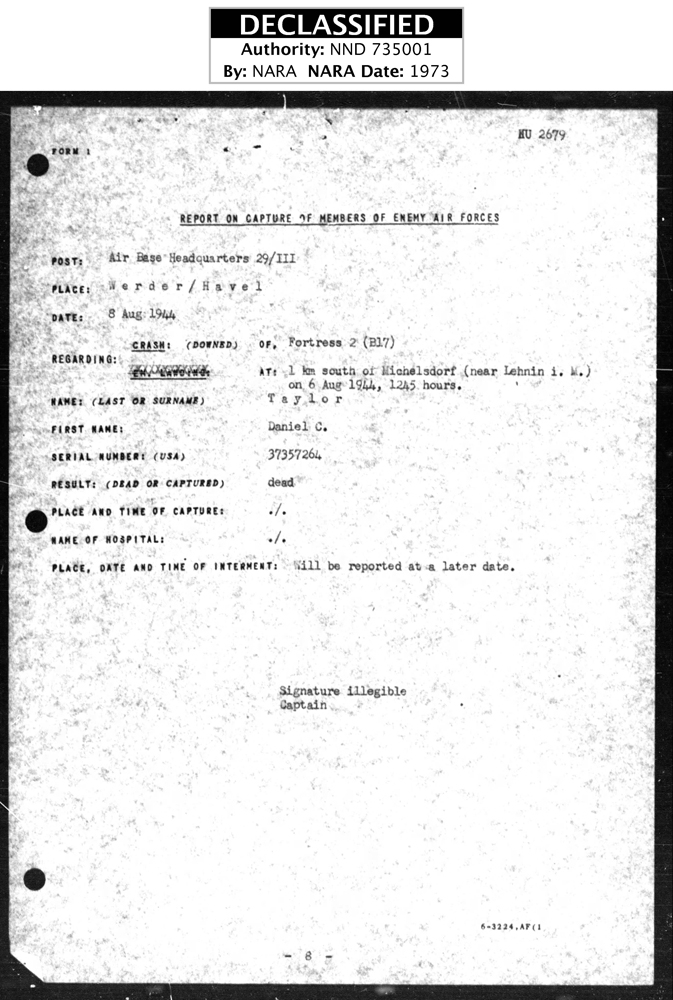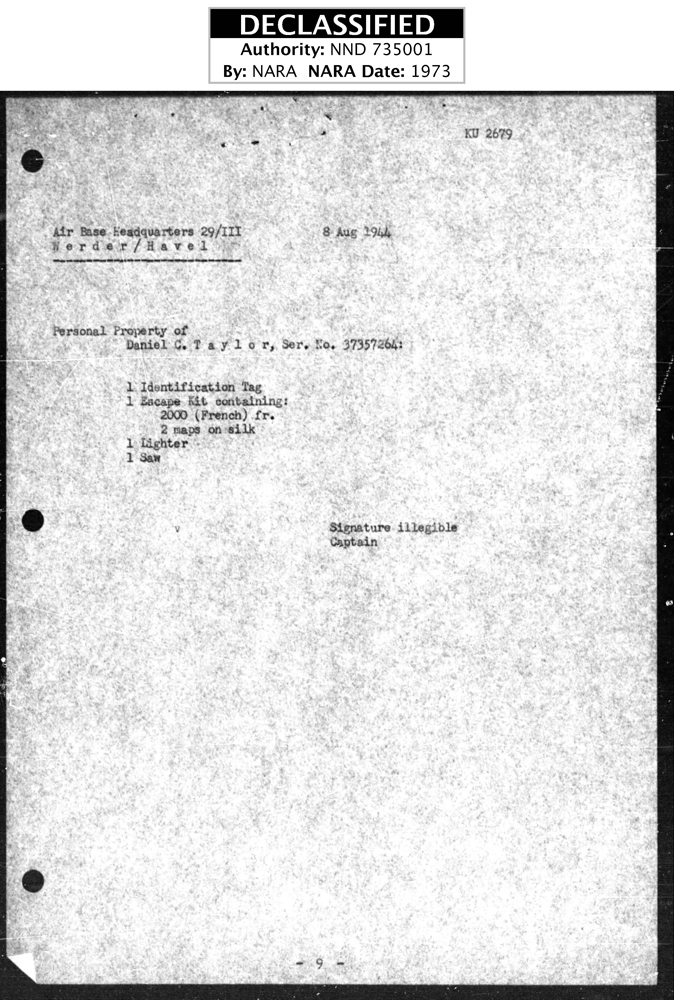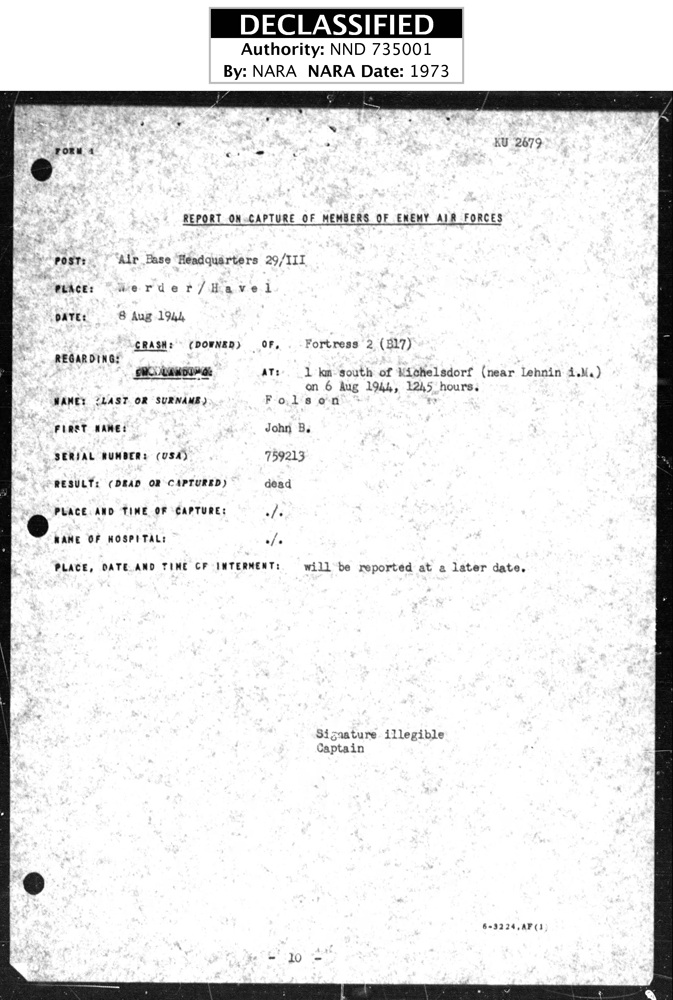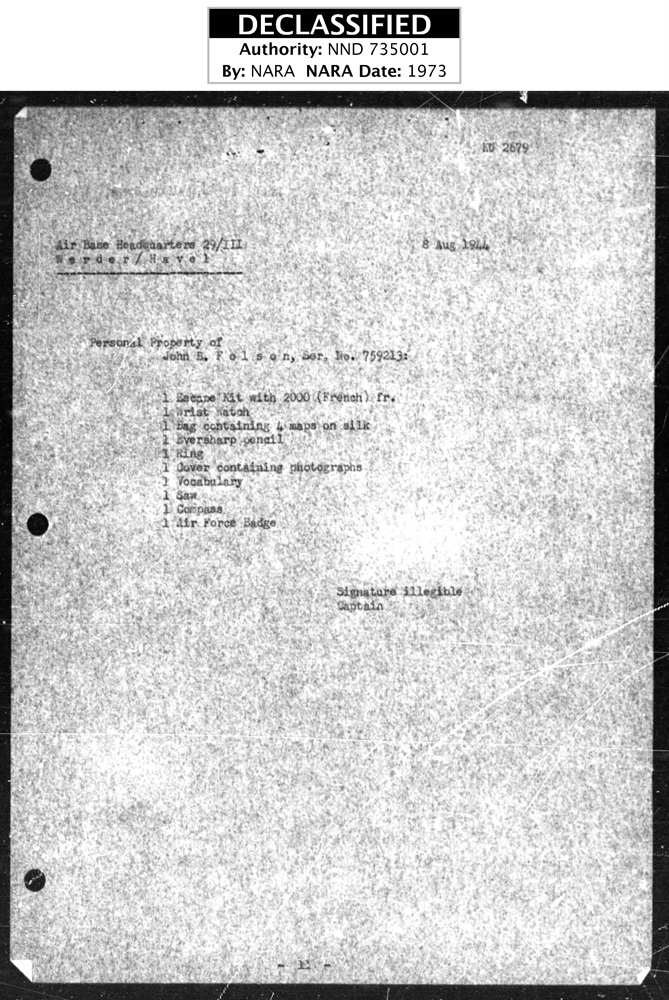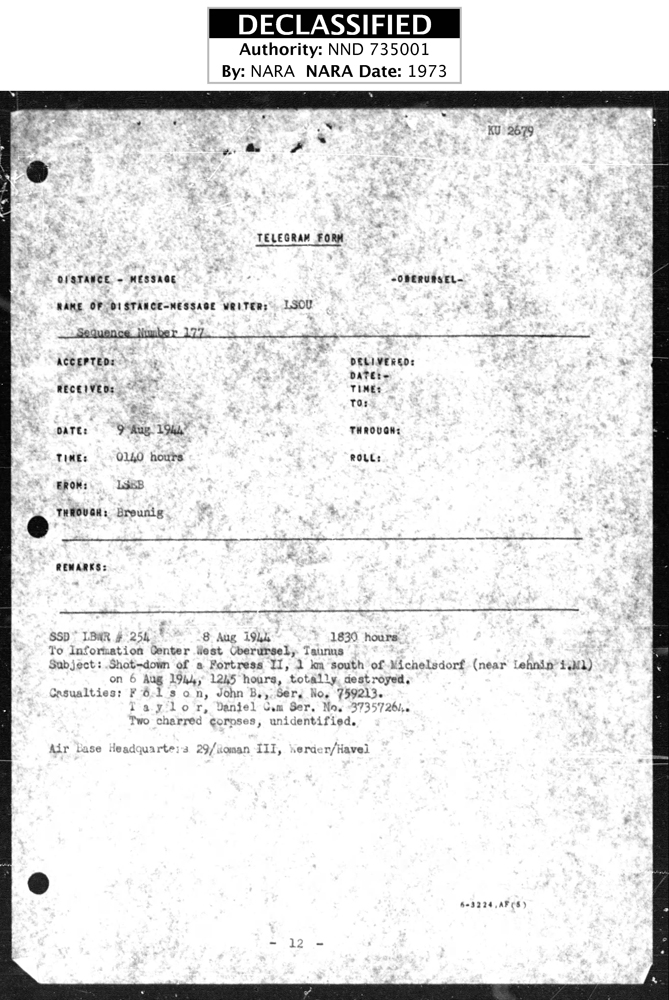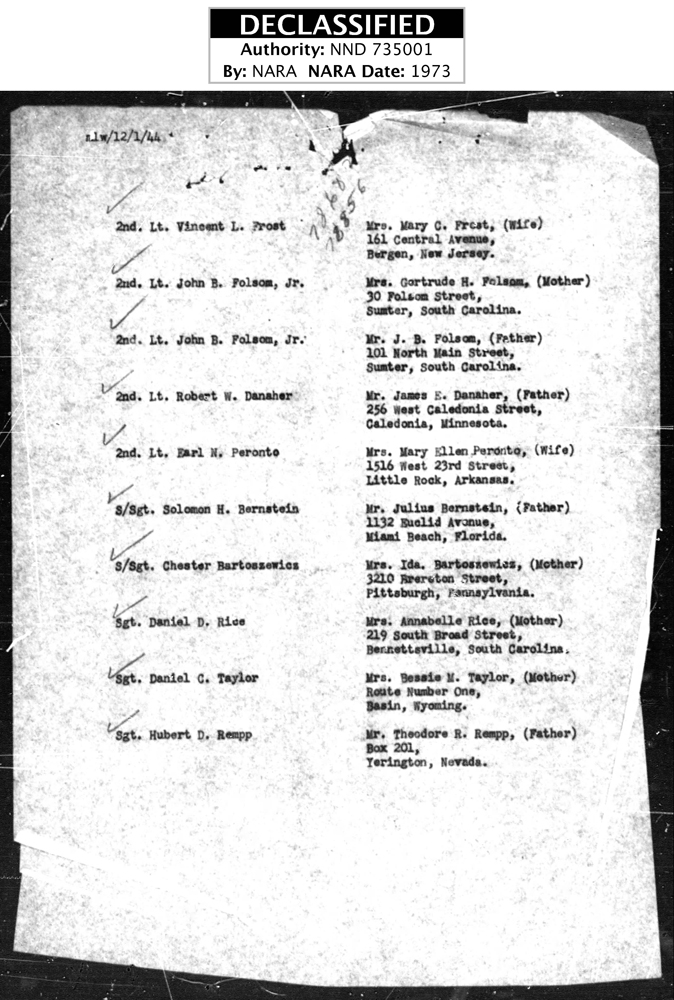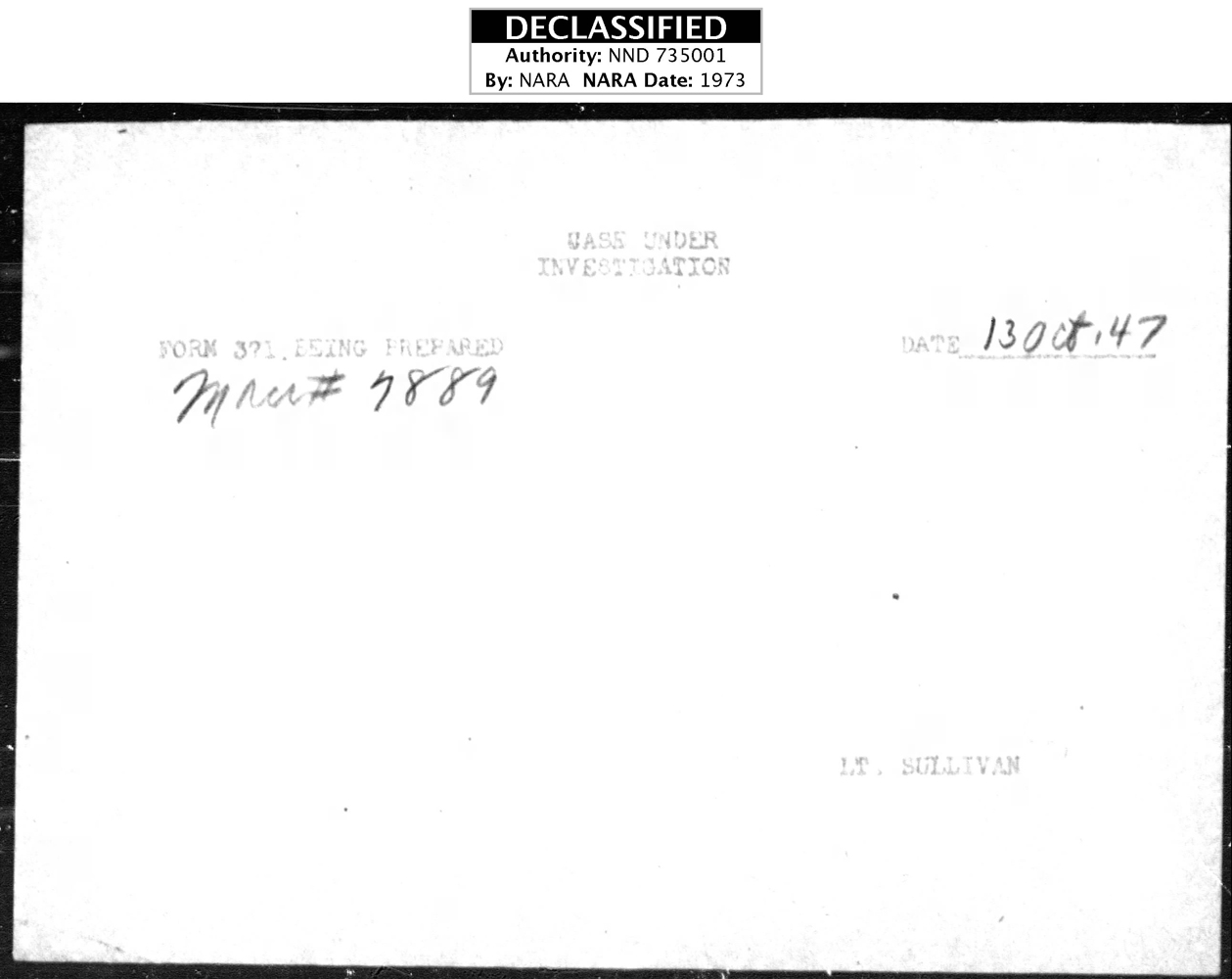Earl Nelson Peronto
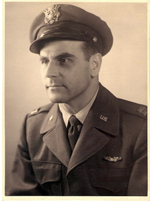
Lt. Colonel Earl Nelson Peronto was born May 6, 1916 and died Mar 29, 1995.
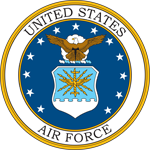
I present a family war hero.
by Jerry Dean Swanson
I was working on the Family Tree when I discovered family war hero. (I love my job!) While exploring the PERONTO branch of our tree, I learned about Earl Nelson Peronto (1916-1995).
Carl L Peronto had married Marilyn (Wegert) Swanson, my mother. Carl, Vance, and James Peronto are my half-brothers from that marriage. Earl would be the 1st cousin, 2x removed of Carl, Vance, and Jim. The story is a very long one…but the content is something like you would experience in a novel.
World War II history interest is strong in this one, so I was off and running when I saw the details of Earl's military service surface. I was riveted. The story moves from a B-17 bombing mission over Germany...being shot down...being captured...being interrogated by the Gestapo...sent to a POW camp...the same camp which was immortalized in the movie "The Great Escape". Earl was later force-marched in the cold Winter and was later held at the largest POW camp in Germany of the day. He was later liberated by Patton's Armored Division. So...Do I have your attention?
Thank you for your service Earl!
Earl was the 1st cousin 1x removed of my stepfather, Carl Lewis Peronto.
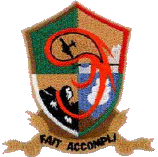
457th Bomb Group
Earl Nelson Peronto was born ion Manitowoc, WI on May 6, 1916 and died in Tampa, FL on March 29, 1995. He married Mary Ellen Dumph on April 25, 1943. They had five Children: John Nelson, Lenda Sue, Jacqueline Ann, Jeannine Marie, and June Peronto.
He enlisted in the Army Air Corp in September 9, 1941 (Pearl Harbor was attacked on December 7, 1941).

751st Squadron
Earl Peronto was an Engineer-Bombardier in the 457th Bomb Group, 751st Squadron. The B-17G, named “Home James”, in which he was the Bombardier, was shot down on August 6, 1944.

Actual Mission Board of the 457th Bomb Group, noting Mission 104
There were nine crew members. Five of the crew bailed out and survived. One crew member fell to his death when his parachute became tangled on the aircraft wing. Three crew members went down with the plane.
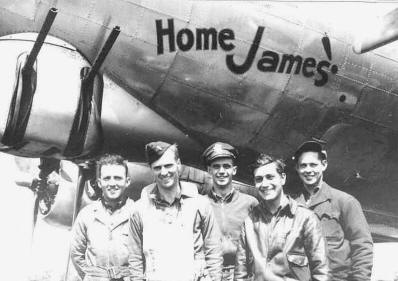
Although this is not Peronto's air crew, the "Home James" was the B-17G which was shot down.
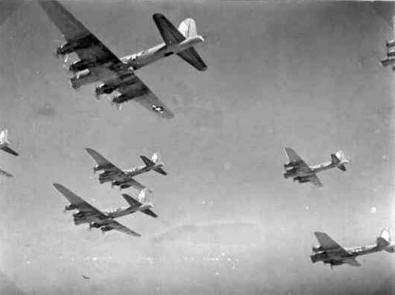
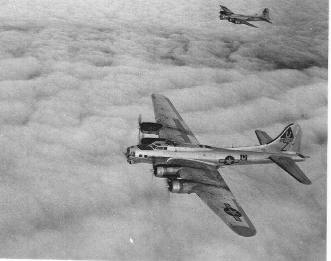
The "Home James" in flight.
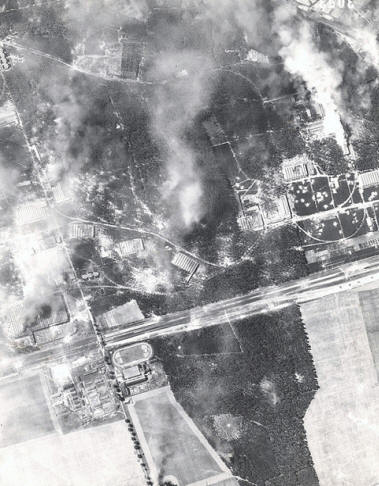
Genshagen Germany August 6, 1944
Mission No. 104
GENSHAGEN, GERMANY, 6 AUGUST, 1944
The target for the 34 planes of the 457th Bomb Group was in the Berlin area. The path of the formation was to fly North of Berlin, circle the city clockwise and strike Genshagen from the north. The Group's target was the Daimler-Benz engine works at Genshagen, 20 miles south of Berlin. This was the largest aircraft engine factory in Germany and main producer of Daimler-Benz 603 and 605 engines, as well as the maker of the new jet engines of the ME-262.
The 457th put up three twelve-aircraft boxes, forming the 94th C Combat Wing. For this thrust into the heart of the Reich, Major Watson was the Air Commander and Captain Dozier was pilot. With the Group flying ninth position, the First Division pointed out across the North Sea on headings as on the previous day's mission, crossed the enemy coast in the same area and again struck southeast between Hamburg and Bremen.
Near Luneburg, the Group had a near encounter with 30 to 60 ME-109s. These passed the formation without attacking, apparently trying to evade P-51s. Thence the route led to a point forty miles north-northeast of Berlin and from that point arched around the city in a clockwise direction.
From the initial navigation point (IP), the target was clearly identifiable. The targets (MPIs) were workshops, which were dispersed in the wooded area of the plant. It was a comparatively short bomb run from the IP and flak was thick. The Group flew a straight and level course and dropped the bombs in the factory area. The Wing turned left after bombs away and was not in flak more than three or four minutes.
At about noon and about ten miles southeast of Brandenburg, the B-17G piloted by Lt. Vincent L. Frost was hit by flak in the No. 2 engine. The fuel from broken gas lines ignited and soon the whole wing was ablaze. The pilot dove out of formation trying to blow out the flames but to no avail. The order was given to bail out. Six parachutes were seen, but one of these fouled with the left wing and the crewman fell without it. Moments later the aircraft blew up.
The complete "Missing Air Crew Report" is at the bottom of this page.
These are the reports filed by the surviving crew:
Daniel C Taylor, the Tail Gunner, was killed by the explosion and went down with the plane.
Chester W Bartoszewicz, the Radio Operator, had lost his oxygen mask, and passed out on the floor of the aircraft.
Daniel D Rice, the ball turret gunner, tried to replace Bartoszewicz's mask to revive him, but was overcome himself and passed out. Rempp grabbed the unconscious Rice and jumped from the plane. Both were captured.
Solomon H Bernstein, the Top Turret Gunner, was last seen fumbling with his chest-pack chute and seemed hesitant about jumping. He went down with the plane.
Robert W Danaher, the Navigator, was the first man out of the nose hatch, did parachute to safety, and was later captured. He was later liberated from Stalag Luft VIIA in Moosburg, Germany.
John B Folson, the Co-pilot, was last heard saying "Stick with it--we'll be OK". He seemed reluctant to face the fact that the ship must be abandoned. He had flown over 25 previous missions. He was also seen fumbling with his chest-pack chute. When en exited the vehicle through the nose hatch, his parachute became entangled on the ball turret, and he was killed when the plane exploded.
Vincent L Frost, the Pilot, was the third man out of the nose hatch, and parachuted safely to the ground. He was also captured.
Robert D Rempp, the Waist Gunner, exited the plane through the waist hatch, parachuted to the ground, and was also captured.
Daniel D Rice, the Ball Turret Gunner, also exited the plane through the waist hatch, parachuted to the ground, and was also captured.
Earl Nelson Peronto, the Bombardier, was the number two man out the nose hatch. He parachuted to the ground and was captured.
Earl Peronto, as are nearly all captured air crew, was taken to Stalag Luft I for interrogation. Earl, and the other surviving crew members were taken to the "Transit Camp of the Luftwaffe", which was called Dulag Luft by the POWs. It was located about thirty miles northwest of Frankfurt. This camp was recognized as the greatest interrogation center in all of Europe. Nearly all captured Allied airmen were sent there to be interrogated before being assigned to a permanent prison camp.
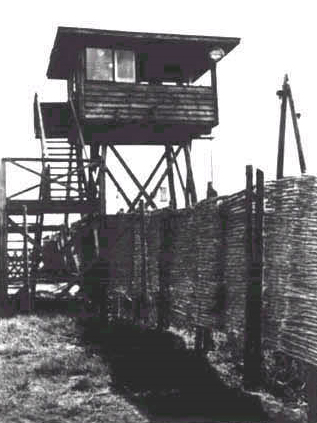
Stalag Luft I
A guard tower with the outside fence.
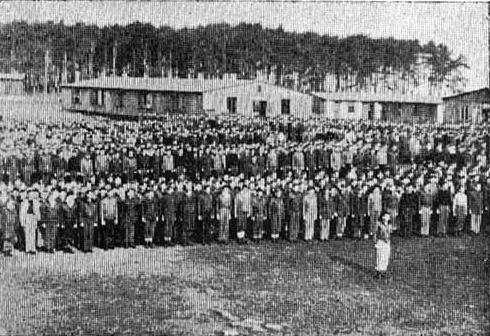
Stalag Luft I Roll Call
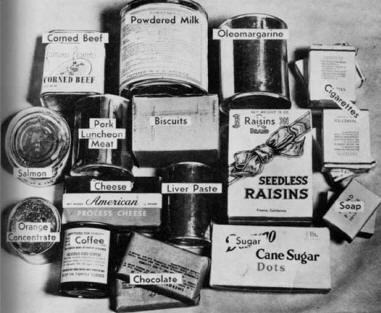
A Red Cross Package for the POWs
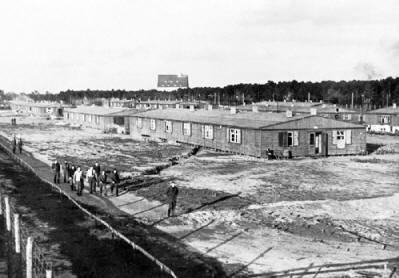
Stalag Luft III Huts, 1944
Excerpts from the book "Kriegie" by Kenneth W. Simmons, published 1960.
"At Dulag Luft each prisoner was studied by several psychologists in order to learn his likes, dislikes, habits and powers of resistance. The method of procedure was then determined, and the machinery was set into operation to destroy his mental resistance in the shortest possible time. If the prisoner showed signs of fright or appeared nervous, he was threatened with all kinds of torture, some of which were carried out, and he was handled in a rough manner. Others were bribed by luxuries. They were traded clean clothes, good living quarters, food and cigarettes for answers to certain questions. Those who could neither be swayed nor bribed were treated with respect and handled with care in the interrogator's office, but were made to suffer long miserable hours of solitary confinement in the prison cells.
Nothing was overlooked by the German interrogators. They studied the results of each interview, and devised new methods to gain the desired information. Allied Air Corps Intelligence started a counter attack against Dulag Luft by training every flier in its command on how to act as a prisoner of war. Every method used to gain information from prisoners was illustrated with films and lectures. Interviews between prisoners and their interrogators were clearly demonstrated to bring out the tactics of the German interrogators. Name, rank and serial number became the byword of the counterattack. Men were drilled and trained by Intelligence until they knew exactly what to expect and what to do. Patriotism and loyalty were stressed, and American airmen were shown the results of information the Germans had secured from prisoners at Dulag.
The camp was built on level ground. There were large white rocks that covered the length of the front lawn forming the words "Prisoner of War Camp". The same identification was painted in white letters across the roof of nearly every building. Dulag Luft was of great importance to the Germans and they knew the Allies would never bomb it as long as it could be identified from the air. The camp was estimated to cover about 500 acres, The boundaries of the camp were formed by two parallel fences ten feet apart and they stood 12 feet tall, with trenches and barbed wire entangled between them. Watch towers were spaced around the camp at one hundred yard intervals. Trained dogs prowled the outer boundaries and heavily armed pill boxes were scattered beyond the barbed wire."
About the beginning of September, and after Earl Peronto's interrogation was concluded, he was moved to Stalag Luft III, a German prison camp for flying officers. It held about 2500 Royal Air Force officers and about 7500 U. S. Army Air Corps Officers.
The camp was under the command of the German Luftwaffe, so the POWs were prisoners of the German Air Force and not the German Army. This worked to the POW's advantage, as the WWI model of respect for the air corp affected our treatment. It was considered a model camp by the International Red Cross, who inspected prison camps to verify that the Geneva Convention rules for the treatment of prisoners were being followed. Stalag Luft III was the same Stalag featured in the movie “The Great Escape”.
Earl entered the camp in August, a few months AFTER the “Great Escape” had occurred.

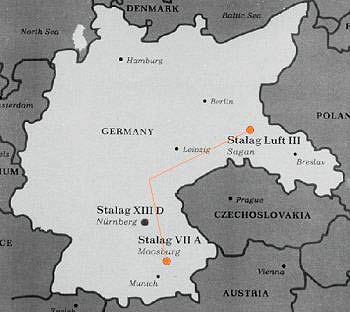
"The March" from Stalag Luft III
To Stalag Luft VIIA in Moosburg.
In January, 1945, Marshal G. K. Zhukov’s First White Russian Army was advancing into Silesia and had reached the Oder River at a point only sixteen miles East of the Stalag Luft III. Adolph Hitler had ordered that all American and British officers in Stalag Luft III be evacuated to the west. Plainly, the Germans did not want to permit the Russians to liberate 10,000 Allied POWs who might returned to action against them. Anyone who tried to escape would be shot.
The prisoners were marshaled at the gate and then driven by their German captors on a 150-mile forced march to Moosburg. The POWs were starving, did not have adequate clothing for the severe cold and consequently many of the POWs died along the way - collapsing and freezing to death in the snow.
Towards the end of the war, the prison camp at Moosburg held over 100,000 POWs from 27 different countries. Stalag VIIA was the largest German POW camp.
On April 29th, the day before Hitler committed suicide, Earl was being held at Stalag VIIA in Moosburg, Germany. The POWs were able to observe Allied bombers overhead and were able to hear the bombs falling. As Allied ground forces approached they were able to hear cannon fire.
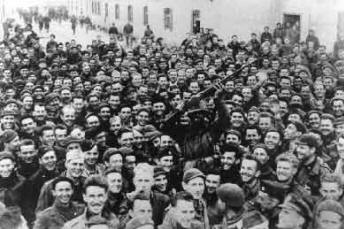
Liberation, April 29, 1945
That morning, elements of the 14th Armored Division of Patton's 3rd Army attacked the SS troops guarding the camp. Prisoners scrambled for safety. Some hugged the ground or crawled into open concrete incinerators seeking protection from the bullets flying overhead. Finally, the American task force broke through, and the first tank entered the liberated camp, taking the barbed wire fence with it.
They were free!
General Patton arrived at the camp two days later, on May 1st, to speak to the men. Earl was soon air-lifted to a base in France, and was later shipped home.
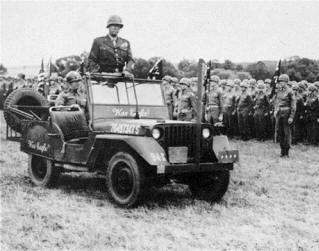
General George S Patton
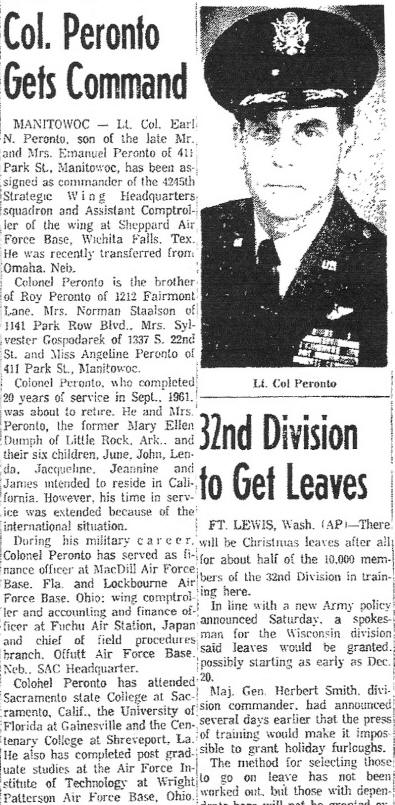
In 1956, Major Earl Peronto was stationed at Turner Air Force Base, in Albany Georgia, as director of controller.
In 1961, Lieutenant Colonel Peronto was assigned as Commander of the 4245th Strategic Wing Headquarters squadron and Assistant Comptroller of the wing at Sheppard Air Force Base, Wichita Falls, TX.
Having postponed his plans for retirement in the early 60’s due to the tense international situation at the time, Peronto later retired to Tampa, FL.
Earl Nelson Peronto passed on March 29, 1995.
Thank you for your service Earl!
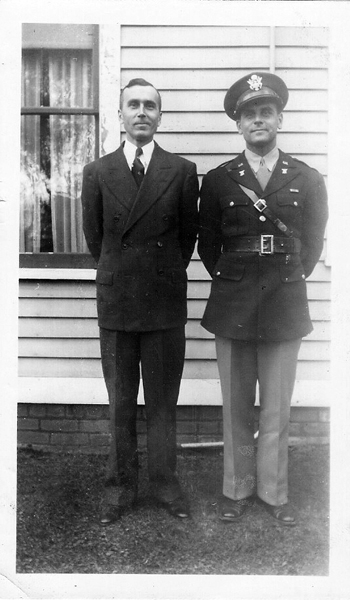
Roy F and Earl N Peronto, 18 Oct 1942
Thank you for your Service Earl!
Never Forget!
The following 35 pages comprise the original Missing Air Crew Report, March 15, 1946
